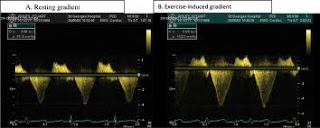Pay day loan is a smart method for those who are rummaging around to start an online payday loan enterprise. There are numerous practical alternatives that will make the process since unproblematic because promising. Actually, there is no need to possess a creating or a lot of expense outlay to get it up and running. Right here one can learn how to start a quick payday loans website inside the very least length of moment, then will perform the program without delay.
If you're on the look out steps to start your personal pay day loan enterprise, then you've to begin by doing the work online. Beginning a small business offline costs a significant amount of and the obstruction to accessibility is rather beyond the floor. The particular cash required to place up or perhaps rent a constructing and place with each other an employee would certainly generate that unifiable in order to commence your personal company outside of the internet. There are several attractive opportunities for all those business owners who desiring to put in the serious amounts of research to go online function.
Affiliate Marketing Programs will be the simplest and the smart way to start a payday loans clients are to do it by using an already established company that provides an affiliate system. These businesses have inked the difficult perform associated with fabricating a brand name and advertising it. Often times, they've got carried out numerous advertising. Furthermore, they have a large subscriber base. In the event you choose the proper company, you can get reap the benefits of their particular uphill battle.
In order to setup the cash advance business and to obtain advantage of that, as pointed out above, you need to have your personal internet site. Establishing a web site is a smart easy process, apart from you'll have to proceed by way of important programs to be able to purchase a domain identify and possess someone create your site. Afterward, you need to have some kind of content to equally provide persons inside and also to prosper with the search engines. Generally, it can be done by placing articles on the website providing people advice about pay day loans. Men and women hunt for payday loans in the interest of acquiring information proper way each day. Thus, if you can provide that in their mind, they'll continue searching your internet site. In addition to that, you are able to pass through other stations to market and promote your web site on the web. The secret is getting the site visitors, to ensure that men and women will make an application for loans through signifies your internet site instead of via the main business web sites. One time, they could make application for a payday loan by way of your site and you may get a commission in the business that you which represents.
If you're on the look out steps to start your personal pay day loan enterprise, then you've to begin by doing the work online. Beginning a small business offline costs a significant amount of and the obstruction to accessibility is rather beyond the floor. The particular cash required to place up or perhaps rent a constructing and place with each other an employee would certainly generate that unifiable in order to commence your personal company outside of the internet. There are several attractive opportunities for all those business owners who desiring to put in the serious amounts of research to go online function.
Affiliate Marketing Programs will be the simplest and the smart way to start a payday loans clients are to do it by using an already established company that provides an affiliate system. These businesses have inked the difficult perform associated with fabricating a brand name and advertising it. Often times, they've got carried out numerous advertising. Furthermore, they have a large subscriber base. In the event you choose the proper company, you can get reap the benefits of their particular uphill battle.
In order to setup the cash advance business and to obtain advantage of that, as pointed out above, you need to have your personal internet site. Establishing a web site is a smart easy process, apart from you'll have to proceed by way of important programs to be able to purchase a domain identify and possess someone create your site. Afterward, you need to have some kind of content to equally provide persons inside and also to prosper with the search engines. Generally, it can be done by placing articles on the website providing people advice about pay day loans. Men and women hunt for payday loans in the interest of acquiring information proper way each day. Thus, if you can provide that in their mind, they'll continue searching your internet site. In addition to that, you are able to pass through other stations to market and promote your web site on the web. The secret is getting the site visitors, to ensure that men and women will make an application for loans through signifies your internet site instead of via the main business web sites. One time, they could make application for a payday loan by way of your site and you may get a commission in the business that you which represents.

















































